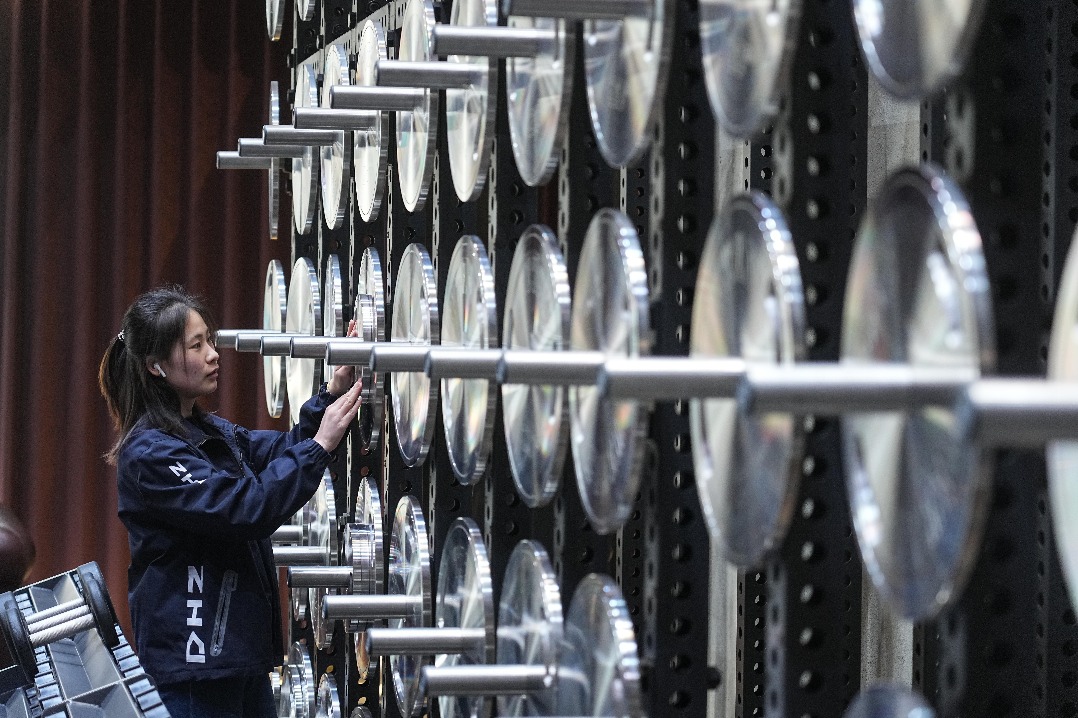City's foresight lays foundation for computing hub status

The air in Suzhou, Anhui province, was stuffy as our bus rolled into the city's high-tech zone. However, I soon found myself energized by the hum of servers and the buzz of innovation, instead of wilting in the oppressive summer heat.
I came to Suzhou — not the famed city in Jiangsu province, but the one in Anhui province — to visit the computing power industrial park.
On the surface, it might have seemed like an unlikely place to take the pulse of China's digital future. But once inside, standing among towering rows of sleek black server cabinets, it became clear: Suzhou is quietly becoming one of the beating hearts of China's push to become a computing powerhouse.
Meng Bin, deputy head of Suzhou Municipal Bureau of Science and Technology, explained that the facility houses thousands of high-performance servers capable of performing complex calculations.
At 10 PFlops, which equates to 10 quadrillion floating-point operations per second, the system here can predict the path of a typhoon in just 15 minutes.
The significance of that number hit home as I recalled the anxious eyes on weather apps during extreme weather. At a time when seconds can mean the difference between disruption and disaster, speed matters.
Suzhou's pivot from traditional industries to high-tech innovation has been both bold. Back in 2011, Suzhou recognized the opportunity to integrate into China's national strategy for data, dubbed "east-data-west-computing".
That foresight laid the foundation for what has become one of the largest computing power hubs in eastern China. Today, the city boasts a computing power scale of 15P in supercomputing and a staggering 2,320P in intelligent computing, among the top in Anhui province.
At the core of this rise is connectivity.
Suzhou sits at the crossroads of four provinces — Anhui, Jiangsu, Henan, and Shandong — making it a key node. It is also one of China's five national-level quantum communication hubs.
In 2021, the city completed a dual-routing transmission line directly to Shanghai, slashing latency from 35 milliseconds to just 5. This brought Suzhou's network performance on par with Shanghai.
The scale of Suzhou's computing power industrial park is hard to ignore. It now comprises five data centers built to T3 plus specifications, with some customized rooms hitting the T4 gold standard, both of which are among the highest standards in the industry.
And companies have responded.
In the past two years, six major computing centers have moved in. Clients range from elite universities like Tsinghua University and Peking University to leading AI firms like Zhipu AI.
Even more telling is who's choosing to stay.
In 2023, Shenzhen-based robotics company UBTECH Robotics invested 180 million yuan ($25.1 million) to build a center here. The first phase, a 4,200-square-meter facility, is already complete and operational. Suzhou is no longer just attracting computation, but also keeping the talent and startups that need it.
"We've had professors and AI experts from the Chinese Academy of Sciences, and even the National University of Defense Technology set up companies right here in Suzhou," Meng noted.
In 2024, the city's AI industry collectively generated 908 million yuan in revenue — a figure that would've been unthinkable even a few years ago in this part of Anhui.
As we stepped out of the server rooms, the heat hit us again. But Meng turned and gestured toward the horizon.
"Suzhou is not just chasing the future," Meng said. "We're building it — cloud by cloud, byte by byte."
It's a bold claim, but not an empty one. The city's ambition is to brand itself as "China's cloud capital" — and if the current momentum continues, that tagline might just stick.
Before I left, I asked what the next five years would bring. Meng didn't hesitate: "We'll keep following the wind of the era — riding the cloud, accelerating with data, and leading with computing power."
After a day surrounded by blinking servers and surging data, I thought that Suzhou may not yet be a household name in China's digital economy, but from where I stood, the signal was strong, the latency low, and the future, unmistakably fast.




































